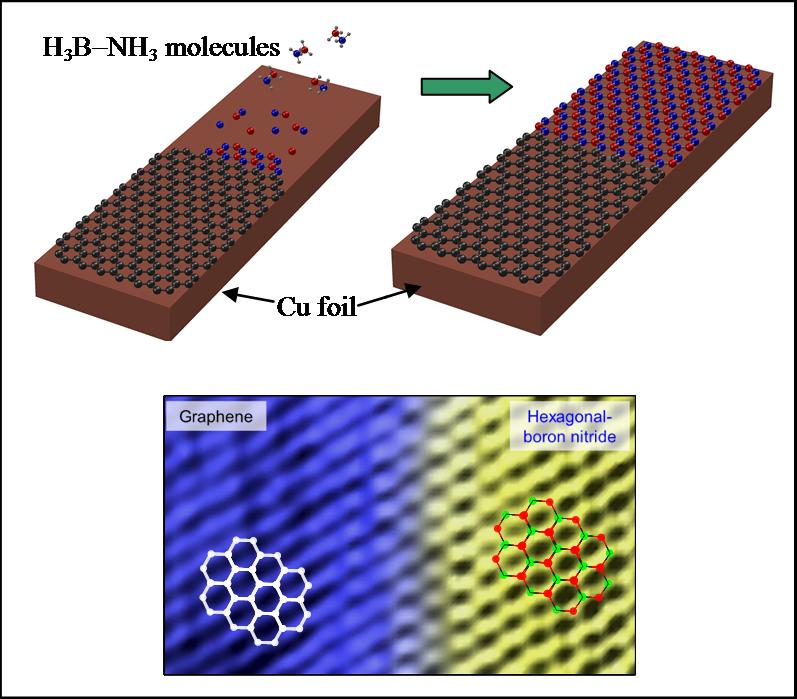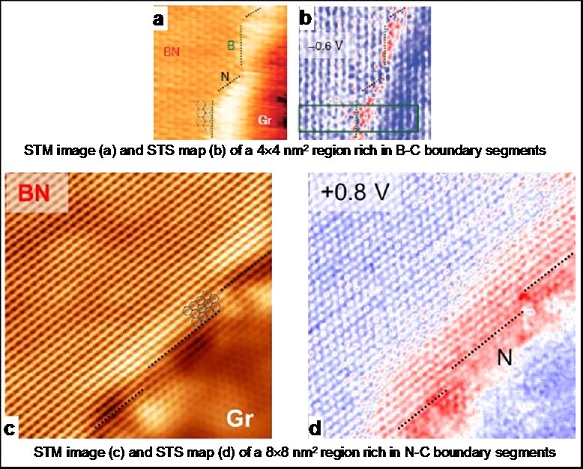Research Highlights
Orientational relations in van der Waals epitaxy
Reference: Lei Liu et al, PNAS 111, 16670 (2014). [Link]
- Graphene & hexagonal boron nitride (h-BN or simply BN) grown on Cu foils
- Cu foil surface exclusively (100) upon annealing preceding growth
- BN strictly aligns to Cu(100): four and only four equivalent orientations (left figure)
- Graphene exhibits a distribution of rotations
- The reason is counterintuitive
- Growing BN edges steer cluster orientation; alignment energetically favored
- Graphene edges interact more strongly with substrate, dragging Cu atoms around and leaving no good template to align to
Heteroepitaxy in two dimensions
Reference: Lei Liu et al, Science 343, 163 (2014). [Link]

- Concept of heteroepitaxy extended (or reduced?) to 2D
- Lattice coherence, sharp boundary, and "2Dness"
- Epitaxy in 2D, not templated in 3rd dimension: BN tendency to align with substrate lattice (see above) overridden
- 1D boundary states observed at atomic scale (see below)
Graphene-BN boundary states
Reference: J. Park et al, Nature Commun. 5, 5403 (2014). [Link]

- 1D boundary states of graphene-BN 2D heterojunctions (see above) captured with atomic resolution
- Observed on Cu foil growth substrate
- Both B-C & N-C boundaries observed, all boundarie in zigzag segments
- Sought-for spin polarization destroyed by Cu substrate; further work needed
Millimeter-sized graphene single crystals
Reference: A. Mohsin et al, ACS Nano 7, 8924 (2013). [Link]
.gif)
Areas of Interest
Dr. Gu's research interest include:
Novel electronic devices based on emerging materials (e.g. graphene, organic semiconductors)
Interdisciplinary junction of physics, materials science, and electrical engineering.